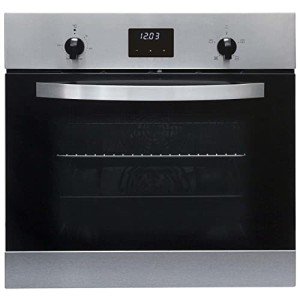Understanding Ovens and Hobs: A Comprehensive Guide
Cooking has come a long way considering that the days of open flames and rudimentary cooking techniques. Today, ovens and hobs are at the heart of contemporary kitchen areas, supplying flexibility, efficiency, and a selection of cooking choices. Whether you are an amateur cook or a skilled chef, understanding the differences, functions, and functions of these home appliances is crucial for optimizing culinary potential. just click the next post breaks down the various types of ovens and hobs available on the market, their performances, and how to pick the best devices for your kitchen.
What is an Oven?
An oven is an enclosed area designed for heating and cooking food, using numerous techniques such as baking, roasting, and broiling. Ovens come in numerous types, each serving distinct cooking preferences and requirements.
Kinds of Ovens
Conventional Ovens:
- Use gas or electricity for heating.
- Usually include a heating element at the top and bottom.
- Ideal for basic baking jobs.
Convection Ovens:
- Use a fan to distribute hot air, promoting even cooking.
- Appropriate for baking, roasting, and reheating.
- Minimizes cooking time and boosts taste.
Steam Ovens:
- Utilize steam to cook food while retaining wetness and nutrients.
- Outstanding for health-conscious cooking, such as vegetables and fish.
Microwave Ovens:
- Use electromagnetic radiation to heat food rapidly.
- Best for reheating leftovers or cooking basic meals.
Wall Ovens:
- Built into the wall, conserving area in the kitchen.
- Offered in different configurations, consisting of single or double ovens.
Secret Features of Ovens
- Temperature Control: Precision heating for numerous baking and cooking procedures.
- Self-Cleaning Options: Some designs have self-cleaning modes that use high temperatures to burn off food residue.
- Smart Features: Wi-Fi connectivity allows remote pre-heating, monitoring, and dish management by means of mobile phones.
What is a Hob?
A hob is a cooking surface area, frequently described as a stove or cooktop, where cookware is positioned for heating. Hobs are readily available in different materials, sizes, and heating techniques, catering to varied cooking needs.
Kinds of Hobs
Gas Hobs:
- Utilize burner for direct flame cooking.
- Offer precise temperature level control and are favored by numerous expert chefs.
Electric Hobs:
- Use electric coils or smooth tops.
- Some designs are geared up with induction technology, providing quick heating through electro-magnetic energy.
Induction Hobs:
- Cookware needs to be made of magnetic products.
- Very energy-efficient, supplying rapid heat and lowering burn threats.
Ceramic Hobs:
- Feature a glass-ceramic surface with heating elements underneath.
- Easy to tidy however can be less energy-efficient than induction hobs.
Secret Features of Hobs
- Burner Configuration: Varies from two to 6 burners, depending upon design and size.
- Power Levels: Multiple settings permit higher accuracy in cooking.
- Security Features: Options like flame failure gadgets and kid lock settings guarantee security during cooking.
Choosing the Right Oven and Hob
Choosing the best oven and hob for your kitchen includes careful factor to consider of numerous factors. Below is a list of concerns to guide your selection process:
- What is your primary cooking style?
- How much kitchen area do you have?
- What is your budget?
- Do you choose gas or electric home appliances?
- Are additional functions like wise connectivity crucial to you?
Table Summary of Key Differences Between Ovens and Hobs
| Feature | Oven | Hob |
|---|---|---|
| Functions | Baking, roasting, broiling | Boiling, frying, sautéing |
| Cooking Method | Confined heat | Direct cooking surface |
| Temperature level Control | Adjustable settings | Stove settings |
| Types | Electric, gas, convection, microwave | Gas, electric, induction, ceramic |
| Cooking Capacity | Larger (can cook multiple dishes) | Smaller (focus on immediate cooking) |
| Cleaning | Self-cleaning alternatives available | Normally manual cleansing required |
Maintenance Tips for Ovens and Hobs
Appropriate care and maintenance of your cooking devices extend their lifespan and efficiency. Here are vital maintenance tips:
Regular Cleaning:
- Clean the oven interior after each usage to prevent residue buildup.
- Wipe down hob surfaces after preparing to prevent discolorations.
Examine Seals:
- Ensure the oven door seals are undamaged to maintain energy performance.
- Replace damaged gaskets and seals as required.
Inspect Burners and Elements:
- For gas hobs, check for clogs in burners.
- For electric hobs, inspect coils and surfaces for signs of wear.
FAQs
Can I utilize any cookware on induction hobs?
- No, induction hobs just deal with magnetic pots and pans, such as cast iron or stainless steel.
What is the most energy-efficient cooking home appliance?
- Induction hobs are generally the most energy-efficient option, utilizing less energy than conventional gas or electric models.
How frequently should I clean my oven?
- It's suggested to clean your oven every couple of months, or more regularly if you utilize it typically.
Can I set up an oven and hob independently?
- Yes, both home appliances can be set up individually based on kitchen design and space.
What should I think about when setting up a gas hob?
- Ensure correct ventilation and follow regional safety codes. It is advisable to have an expert install gas appliances.
Comprehending the features, types, and maintenance of ovens and hobs can substantially improve your cooking experiences. Selecting the best home appliances customized to your cooking design, kitchen area, and security requirements can make all the distinction in achieving culinary success. By being notified about your alternatives, you can enjoy a more efficient and pleasurable cooking journey, bringing tasty meals to your table with ease.

